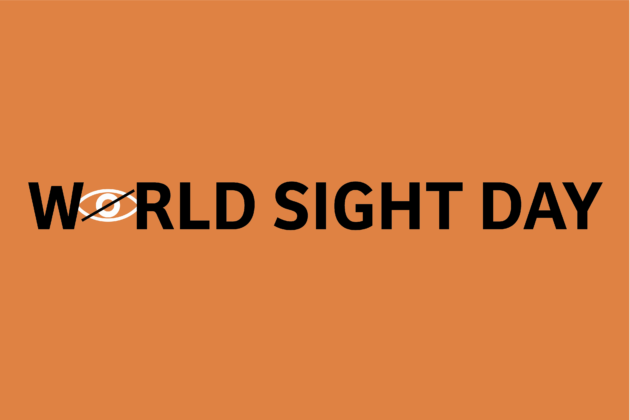Take action on accessibility on World Sight Day (and beyond)
World Sight Day is held every year to “focus global attention on blindness and vision impairment”. I don’t need global attention, but I am after yours.
Events like World Sight Day challenge us to acknowledge the barriers that exist in our society and reflect on how to become better allies to people with visual impairments.
It’s a reminder that if we want to be considered “best-in-class” communicators, and fulfill our duties under the Equalities Act 2010, we should be championing accessibility at all levels across the Government Communication Service (GCS) by putting inclusive communications into practice.

Accessibility exists beyond the physical world
A few years ago, I volunteered to become a ‘sighted guide’ and was trained how to help people with sight loss navigate different environments safely. That training involved the educational experience of being guided blindfolded around the London Euston concourse during rush hour. It allowed me to experience – in a limited and temporary way – some of the barriers people with sight loss face when navigating the physical world.
It’s probably easy for you to imagine how it would feel to navigate a crowded, cavernous and unfamiliar space, like a train station, without your usual ability to see. You could probably name some of the hazards or issues you’d encounter, and how you might go about overcoming them.
But have you ever imagined how you’d fare, or the obstacles you’d face, if you had to navigate the equally crowded, vast and often unfamiliar environment of the internet without clear vision?
Digital accessibility must be a GCS priority
The expectation that things like step-free access, hearing loops and accessible toilets are available in public places is so well socialised that most people would notice their absence, even if they didn’t need those adjustments themselves.
But the elements of digital accessibility are perhaps less well-known. So too often, many of the inaccessible features of websites or other digital communications go unnoticed by those not directly affected. And with so much of our lives taking place on a screen, that really needs to change.
Those of us in government communications roles, whose work affects millions of people’s lives each and every day, have a responsibility to make sure our communications are as accessible and inclusive as possible.
Three ways to champion digital accessibility
There are many ways to become a better ally by improving the accessibility of your digital communications. Here are 3 ways you can start applying inclusive communications best practice to your work today.
During website development
The deadline for the regulations which required all public sector organisations to have accessible websites was 23 September 2020. By now, any existing websites your organisation uses for campaigns, or to host online services, should have undergone an accessibility audit, and published an accessibility statement.
But with new websites coming online all the time, it doesn’t hurt to keep the accessibility regulations front of mind. The Government Digital Service (GDS) has lots of guidance and resources to help you ensure your websites achieve (and maintain!) compliance within the regulations.
Accessible website content planning and publishing
Of course, your responsibilities do not end on the date your site is launched. It’s important to ensure accessibility best practice is built into your content strategy for the long term. That includes the copy, images and resources you plan to feature on the site.
These helpful guides will help you learn how to publish accessible documents and understand how to describe images for people who cannot see them by drafting effective ‘alt text’ for images on your website.
And if you’re interested in learning more about creating user-centred content that’s easy for everyone to access and understand, why not sign up to GDS’s free 4-week “Introduction to content design” course?
Accessible social media content and campaigns
Earlier in 2020, GDS collaborated with colleagues from Cabinet Office, the Government Equalities Office and the Government Communication Service (GCS) to produce a guide to creating impactful social media campaigns.
The guidance covers best practice for multiple types of accessibility needs. It is packed with practical advice on how to develop and run social campaigns that won’t exclude people with visual impairments – from adding alt text on different platforms, to checking colour contrast levels and font types used in design.
Show your commitment to becoming both a better communications professional, and a member of the digital accessibility #A11y movement, by reading it before posting your next piece of social content.
Routes to further learning
Accessible digital communications will become increasingly important as more services and more of our lives migrate online. It’s important that as a profession we keep pace.
GCS has a range of learning materials and training covering different aspects of accessible communications that are available to members.
